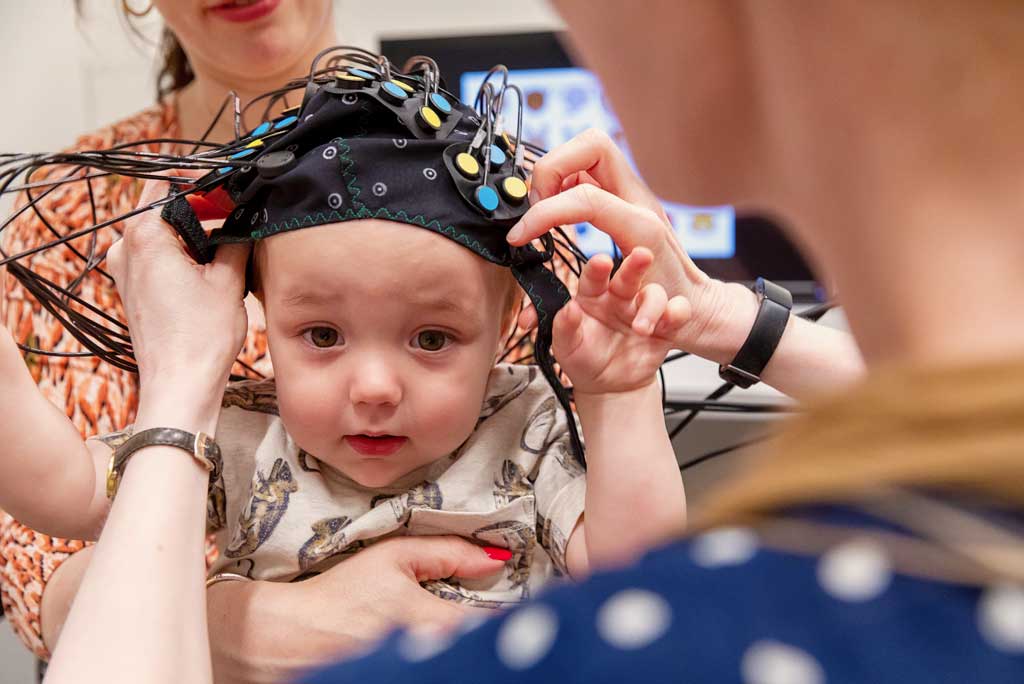In this theme, our researchers are trying to figure out what kinds of mechanisms within the brain support language learning.
The rhythm of language
In one project, headed by Tineke Snijders, we are looking at rhythm in the brain. When speaking, speakers emit sound waves that vary in energy over time. This gives speech a characteristically rhythmic pattern. And surprisingly, adult brain waves synchronise with speech: when listening to speech, our brains start to fire in the same rhythmic pattern.
We have recently discovered that infant brains also track the rhythm of speech, and that this happens early in life, even before infants have learned a language! But we do not yet know how this ability to track the rhythm of speech affects how we process and learn language. Does this brain-speech synchrony actually help us learn language; for example does it help us identify where words begin and end in continuous speech? Are there differences across children in how quickly and well their brains synchronise to speech? We are answering these types of questions.


Recognising language patterns
In another project, headed by Rebecca Frost, we are looking at the role of pattern-recognition in language learning. We humans are very good at spotting patterns in the environment. For example, when learning a sequence of shapes (e.g. X 0 X 0 X 0), we quickly learn to spot the pattern (e.g. that 0 follows X). Speech also has a pattern in the sense that some items in speech are more likely to co-occur than others (e.g. 'cake' is more likely than ‘table’ to follow ‘eat the…’).
Babies are extremely good at pattern recognition and can use this skill in language learning. Even without trying to, they can compute information about the way items in speech co-occur (for example, syllables in words, or words in grammatical structure). This helps them to identify words, and the constraints that govern the way those words are used. We are studying the way infants use these pattern recognition skills to build their knowledge of words and grammar.
Read more?
Snijders, T. M., Benders, T., & Fikkert, P. (2020). Infants segment words from songs – an EEG study. Brain Sciences, 10(1), 39.
Stärk, K., Kidd, E., & Frost, R. L. A. (2021). Word segmentation cues in German child-directed speech: A corpus analysis. Language and Speech. Advance online publication.
Frost, R. L. A., Monaghan, P., & Christiansen, M. H. (2019). Mark my words: High frequency marker words impact early stages of language learning. Journal of Experimental Psychology: Learning, Memory, and Cognition, 45(10), 1883-1898.